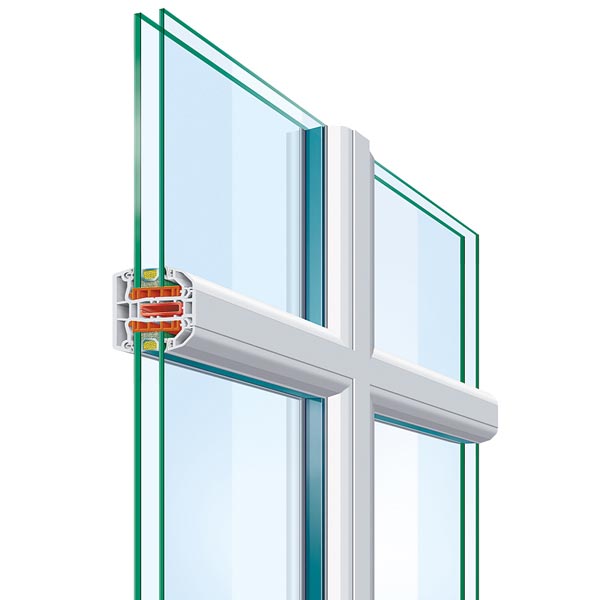Until the mid 1850s, glass was produced in small sizes and combined into large windows and doors using glazing bars (also called muntins or muntin bars). While no longer economically necessary, dividing windows with glazing bars is still considered more architecturally attractive and particularly common in the United Kingdom and its former colonies. Neuffer offers three varieties of glazing bars to suit your sense of aesthetics and budget for any window, whether made of timber or uPVC or an aluminium clad one. The bars themselves are also available in different materials.
Genuine Glazing Bars
Genuine glazing bars partition the glass into a series of smaller panes, meaning the window does not consist of a single large piece of glass. In the past, more glazing bars and small panes of glass meant more opportunity for insulation problems. However, this is no longer an issue and modern windows with genuine muntins are still nearly indistinguishable from their single pane counterparts. Finally, real bars provide significantly better burglary protection.
Viennese Glazing Bars
Viennese bars are secured to both the inner and outer face of the window’s glass with strong adhesive. They can be installed over both double and triple glazing and the number of bars can also be determined to truly emphasise the symmetrical pattern created. Opting for a window with many matching Viennese bars, for example, can produce an elegant, historic design, beautifully framing outside views.
Helima Glazing Bars
Helima bars are powder-coated bars inserted in-between the individual glass panes of glass. This means the outer window surface remains unchanged and is thus very easy to clean. The only disadvantage is that, being between the glass panes, the bars can serve to conduct energy and decrease a window's insulation ability somewhat.






